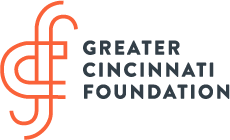Project LIFT a Potent Blend of Public, Private Funds
Ms. Johnson (her name has been changed to protect her privacy) and her two children live in Woodlawn. She’s employed full-time as a laboratory technician at a local hospital, has received several salary increases since earning her phlebotomy certificate and mentors new staff members.
Why are we telling you her story? Because she is one of 64 Hamilton County residents currently participating in Project LIFT — Lifting and Investing in Families Thriving. A unique public/private partnership launched in April as an initiative of the Child Poverty Collaborative. Project LIFT is designed to improve the economic self-sufficiency of families in poverty by removing significant financial barriers to their goals. By focusing on family-driven solutions and working with a pilot alliance of 19 nonprofit agencies, Project LIFT simultaneously leverages the maximum of federal/state/local public funds while tapping flexible private funds to fill in the gaps of services.
Greater Cincinnati Foundation (GCF) is administering the private funding for Project LIFT, and has pre-awarded a grant of $25,000 to each participating agency. To date, $750,000 in private funds has been raised through contributions from generous donors and organizations such as the United Way of Greater Cincinnati, TriHealth, Thomas J. Emery Memorial, The Kahila Kadosha Adath Israel congregation, Cincinnati Children’s Hospital and a number of private donors. Project LIFT’s first-year goal is to serve 650 families.
“Project LIFT is a strategic partnership of public and private funding designed to remove pressing barriers for families working to achieve stability,” said Dora Anim, GCF Chief Operating Officer, who serves on the Project LIFT management team. “GCF is pleased to serve as a regional resource to help bring together and administer this vital work, which aligns with our mission to create equitable opportunities for all families that enable them to move forward out of poverty.”
The program includes five key components: employment/engagement, flexible service coordination, wraparound funding for both emergency and developmental needs, transportation solutions and community outreach/engagement. Outcomes, measured in six-month intervals, will include:
- Percentage of families who increase income by at least 20 percent.
- Percentage of families who have at least two significant barriers removed.
- Percentage of families above 100, 150 and 200 percent of federal poverty level at program completion (no more than three years).
For Ms. Johnson, an early Project LIFT enrollee, coordination of funding provided federal assistance with a car repair and gas cards. She also had an unresolved Duke Energy balance that, due to her increased income, was ineligible for Ohio percentage of income (PIPP) funding. Ms. Johnson’s Project LIFT sponsor was able to resolve the debt with private funds and worked with her to create a balanced budget. The result? Ms. Johnson can fully focus on increasing her self-sufficiency by pursuing her goals of obtaining additional career certifications — including registered nurse — and purchasing a home.
We invite you to join with GCF in funding Project LIFT’s collaborative efforts to improve the economic self-sufficiency of families in our community. For further information, please contact your GCF philanthropic advisor.

